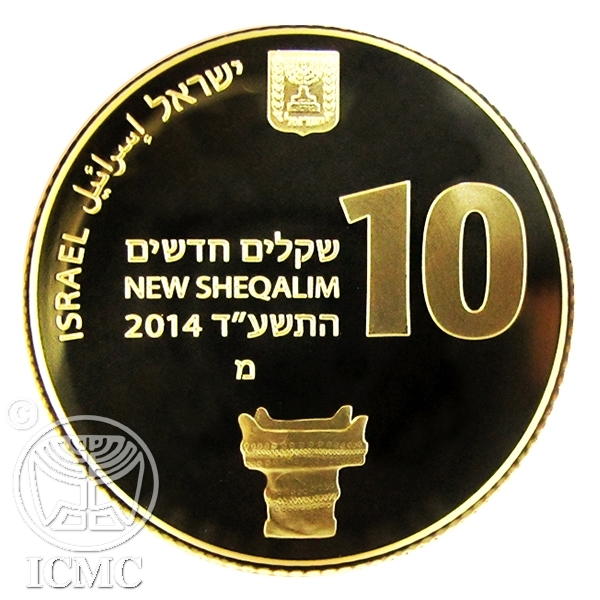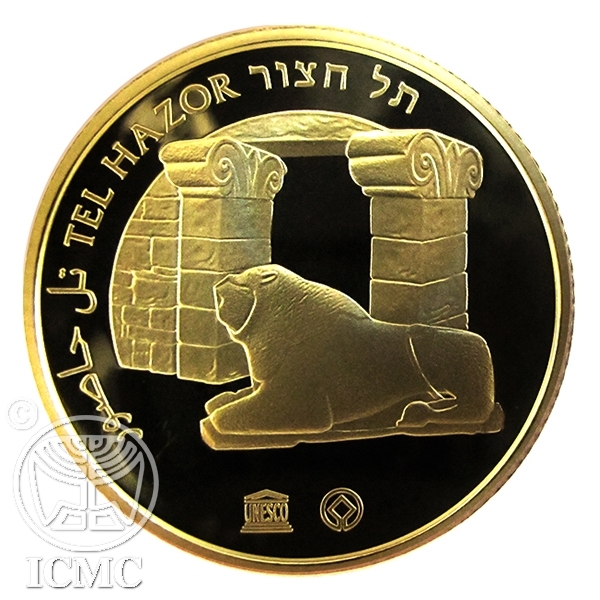
The upper city of Hazor, known as the "Acropolis", was the first area to be settled in the third millennium BCE in Canaanite times, early Bronze Age, while the lower city (the fortified enclosure) was settled around the 18th century BCE. Canaanite Hazor, which appears to have been one of the largest, strongest and most central cities of the time, was destroyed by the Israelites under the leadership of Joshua (Joshua Chap. 11). The city was rebuilt and fortified by King Solomon (1 Kings 9) in the tenth century BCE. It prospered in the days of Ahab and Jeroboam II in the ninth and eighth centuries BCE, but was finally destroyed by the Assyrians (2 Kings 15) in 732 BCE.

Representing an interchange of human values throughout the ancient near-east and being a testimony to an ancient civilization with a high level of engineering and technology, Tel Hazor was recognized by UNESCO as a World Heritage Site, in 2005.
The coin reverse presents remains of the Canaanite and Israelite periods.

On the coin obverse, beneath the face value appears a representation of a tenth century BCE incense altar that was in use in the Israelite period.
Design:
Obverse - Gideon Sagi , Reverse - Eitan Hendel
Coin Description
Obverse: The Face Value, Israel State Emblem, "Israel" in English, Hebrew and Arabic, Mint Year and Mint Mark, a tenth century BCE incense altar from the early Israelite period in Tel Hazor
Reverse: UNESCO and World Heritage Sites Emblems. Major archaeological findings at Tel Hazor: basalt lion orthostat from the Canaanite period, late Bronze Age, Royal fortress gate from the Israelite period
Зарегистрируйтесь или авторизуйтесь, чтобы оставлять комментарии.
Это очень просто и занимает буквально несколько секунд!
Авторизоваться
Зарегистрироваться